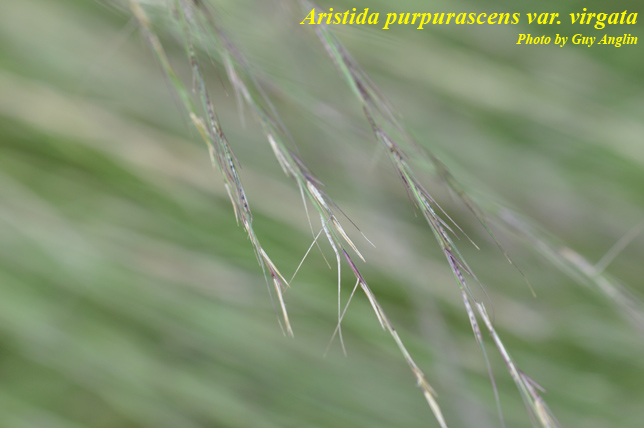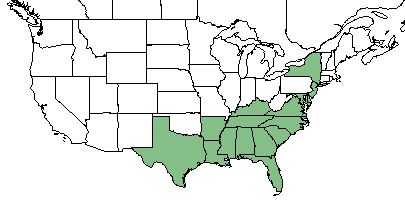Difference between revisions of "Aristida virgata"
(→Ecology) |
(→Ecology) |
||
| Line 39: | Line 39: | ||
<!--===Fire ecology===--> <!--Fire tolerance, fire dependence, adaptive fire responses--> | <!--===Fire ecology===--> <!--Fire tolerance, fire dependence, adaptive fire responses--> | ||
<!--===Pollination===--> | <!--===Pollination===--> | ||
| − | + | ===Use by animals=== <!--Herbivory, granivory, insect hosting, etc.--> | |
| + | ''A. virgata'' has poor forage value. <ref name= "Hilman 1964"> Hilmon, J. B. (1964). "Plants of the Caloosa Experimental Range " U.S. Forest Service Research Paper SE-12 </ref> | ||
<!--==Diseases and parasites==--> | <!--==Diseases and parasites==--> | ||
Revision as of 13:33, 12 June 2018
Common name: arrowfeather threeawn [1]
| Aristida virgata | |
|---|---|

| |
| Photo by the Atlas of Florida Plants Database | |
| Scientific classification | |
| Kingdom: | Plantae |
| Division: | Magnoliophyta - Flowering plants |
| Class: | Liliopsida - Moncots |
| Order: | Cyperales |
| Family: | Poaceae |
| Genus: | Aristida |
| Species: | A. virgata |
| Binomial name | |
| Aristida virgata Trinius | |

| |
| Natural range of Aristida virgata from USDA NRCS Plants Database. | |
Contents
Taxonomic Notes
Synonyms: A. purpurascens Poiret var. virgata (Trinius) Allred
Varieties: none
Description
A. virgata is a perennial graminoid of the Poaceae family native to North America. [1]
Distribution
A. virgata can be found in the southeastern United States from Texas to New York. [1]
Ecology
Habitat
A. virgata proliferates in moist to wet pine savannas, wet pine flatwoods, mountain bogs, and other moist habitats. [2]
Phenology
A. virgata does not hold up well against transplanting. [3]
Use by animals
A. virgata has poor forage value. [4]
Conservation and Management
A. virgata is listed as: a "special concern" species by the Connecticut Department of Environmental Protection, endangered by the Maryland Natural Heritage Program, and threatened by the Massachusetts Natural Heritage and Endangered Species Program, the Pennsylvania Department of Conservation and Natural Resources, and the Rhode Island Department of Environmental Management. [1]
Cultivation and restoration
Photo Gallery
References and notes
- ↑ 1.0 1.1 1.2 1.3 USDA Plant Database https://plants.usda.gov/core/profile?symbol=ARPUV
- ↑ Weakley, A. S. (2015). Flora of the Southern and Mid-Atlantic States. Chapel Hill, NC, University of North Carolina Herbarium.
- ↑ Aschenbach, T. A., et al. (2010). "The initial phase of a longleaf pine-wiregrass savanna restoration: species establishment and community responses." Restoration Ecology 18(5): 762-771.
- ↑ Hilmon, J. B. (1964). "Plants of the Caloosa Experimental Range " U.S. Forest Service Research Paper SE-12